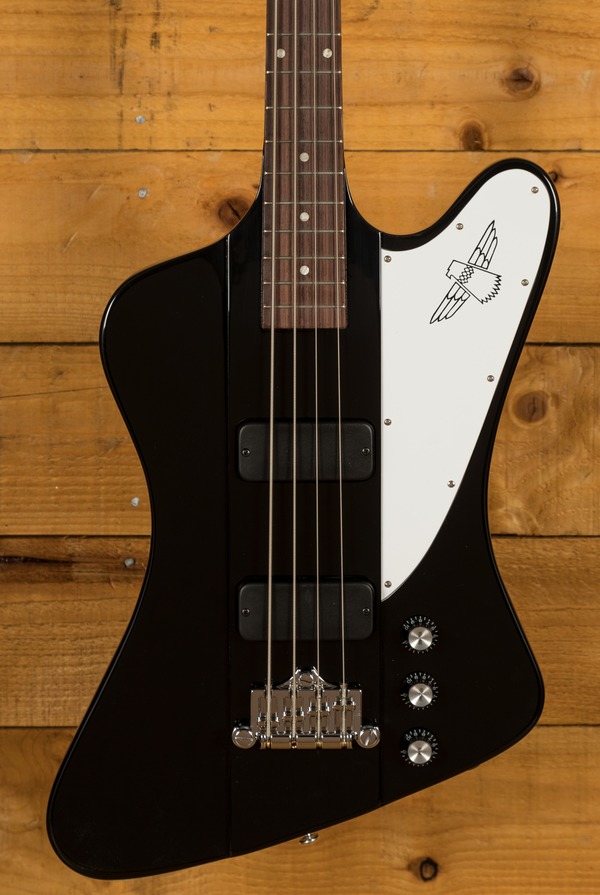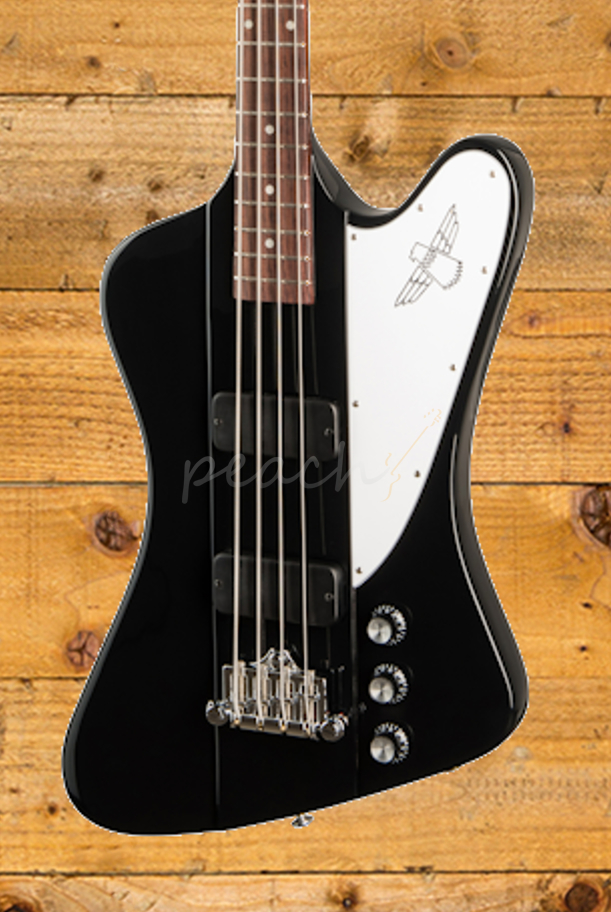

The Thunderbird IV was reissued in 1976 as a bicentennial edition. Gibson started producing the non-reverse Thunderbirds again for the public in late 2012. Though fewer non-reverse Thunderbirds were shipped, the original reverse-body instruments retain a higher collectors' value. The non-reverse Thunderbird was continued until 1969. Also, the expensive neck-through construction was replaced by traditional Gibson set-neck construction. Due to a lawsuit brought by Fender because of the resemblance to the Fender Jazzmaster, the body styles were modified, with the result being called the "non-reverse" body. The original Thunderbirds (and Firebirds) have a "reverse" body, with the treble horn extended and the bass horn recessed. In 1966, Gibson changed the Thunderbird's design and construction. The Thunderbird usually features bass humbuckers, colloquially referred to as "soapbars" due to their appearance.

There were originally two Thunderbird models: the Thunderbird II, with only one pickup, and the Thunderbird IV, with two pickups. Previous models use the short scale of 30½ inches. The Thunderbird was Gibson's first model built in the 34-inch scale, which had been made popular by Fender.
#Short scale thunderbird bass series#
The Thunderbird bass, like the Rickenbacker 4000 series and the Firebird guitar designed concurrently, has neck-through construction: the neck wood runs the entire length of the body, with the rest of the body glued into place, although some cheaper Epiphone models feature a more conventional bolt-on neck construction. Josh Reedy of DecembeRadio playing a custom Gibson Thunderbird onstage Dietrich (Chrysler, Lincoln, Checker) along with the Firebird guitar, which it resembles in design, construction, and name.ĭesign and construction File:Josh Reedy Decemberadio.jpg At the time, Fender had been the leader in the electric bass market since their introduction of the Precision Bass twelve years earlier.

The Gibson Thunderbird was introduced in 1963. 4.1 Features of current and recent models.It cannot be ruled out that your data collected by Facebook will also be transmitted to the USA. We ourselves are not in a position to identify you personally via the meta pixel, as apart from your browser ID no other data is stored with us via the pixel.įor more information about the Meta Pixel, the details of data processing via this service and Meta's privacy policy, please visit Meta Privacy Policy - How Meta collects and uses user data for Facebook and Meta Privacy Policy - How Meta collects and uses user data for Instagram. Meta then delivers individualised ads from us on Facebook or on Instagram that are tailored to your needs.

Meta is able to identify you by your browser ID, as this is linked to other data about you stored by Meta on your Facebook or Instagram user account. When you visit our websites, the pixel establishes a direct connection to Meta's servers.
#Short scale thunderbird bass code#
The meta pixel are code snippets which are able to identify your browser type via the browser ID - the individual fingerprint of your browser - and to recognise that you have visited our websites and what exactly you have looked at on our websites. The Meta Pixel is a remarketing pixel implemented on our websites that allows us to target you directly via the Meta Network by serving ads to visitors of our websites when they visit the social networks Facebook and Instagram.


 0 kommentar(er)
0 kommentar(er)
